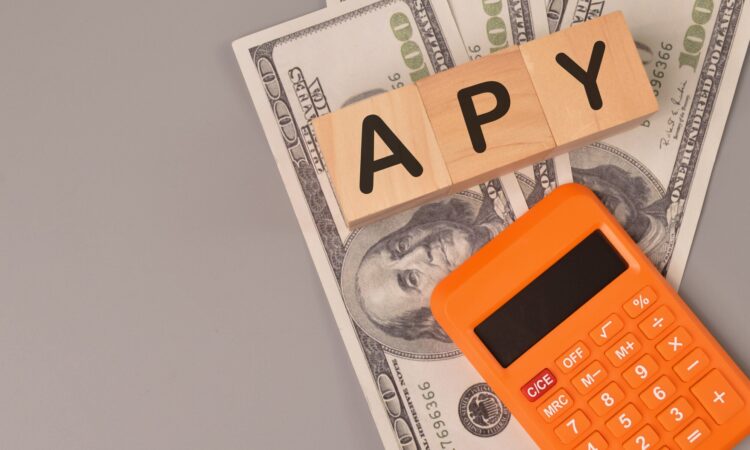
The ABCs of successful money management include an understanding of APY, or annual percentage yield, an acronym you’ll see advertised by banks on their savings products. Long story short: The higher the APY, the better it is for your wallet.
Annual percentage yield, explained
APY refers to how much you can earn in a given year on money deposited in an interest-bearing account, such as a savings account or certificate of deposit (CD). The greater the APY, the more money you stand to earn from interest.
If you’ve been saving for any length of time, you’ll have noticed that APYs move up and down. A bank may offer, say, a 3% APY one month, before dropping it to 2.75% the next.
That’s because the banks take their cue from the Federal Reserve when deciding APYs.
When the Fed raises its benchmark federal funds rate, banks usually respond by increasing yields. Likewise, if the Fed lowers the rates, banks will lower APYs. Of course, banks make the ultimate decision on what level rates should be at a particular time.
These movements have large scale impacts on the economy, which is why the Fed makes a particular interest rate decision.
When the economy is too hot and inflation is high, the Fed will increase interest rates. That has the effect of making it more advantageous to save and more costly to borrow. The hope is that economic activity will cool.
Likewise when the economy is struggling, the Fed will cut rates to stimulate growth.
Savers will notice these changes when they look at their monthly bank statements.
How to calculate APY
Here’s the basic formula you can use to calculate APY:
APY = (1+r/n)n – 1
Notes: “R” is the interest rate, while “N” is the number of compounding periods.
This formula takes into consideration the concept of compounding, meaning the interest you earn on the initial principal plus the interest you earn on the interest. Interest may be compounded numerous times a year, such as daily or monthly.
Under the federal Truth in Savings Act, financial institutions must supply APYs and other information when you open an account.
Still, it’s important to read the fine print when scoping out APYs. For instance, some APYs may be fixed, such as with many CDs, while others are variable, as is the case with most savings accounts.
“APYs can vary wildly between financial institutions,” said Taylor Kovar, a Lufkin, Texas-based certified financial planner. “So it is vital to shop around for the best deal.”
Example of APY
Let’s say the interest rate for your account is 2.50% and the number of compounding periods is 365 (every day). Here’s how the formula would look in this case:
APY =(1+.025/365)365–1
That equals .0253, or 2.53%.
Based on that APY, the future value of a $1,000 initial deposit would be $1,025.31, thanks to $25.31 from interest compounded daily over the course of a year.
Remember, the more often an account compounds the more yield you’ll receive. For instance, in the above example, you’d have an interest rate of 2.52% if the account compounded twice a year, and $25.16 in interest.
That may seem like a small difference, but small differences add up over time.
APY vs. APR
APY and APR (annual percentage rate) are two important terms to know when it comes to your money. And they’re two very different terms.
APY applies to the amount of interest you earn on money you save. APR refers to the amount of interest you’re charged when you borrow money, such as with a credit card or loan.
So, you ultimately want the highest APY available, but the lowest APR available. In the long run, a higher APY and a lower APR typically put more money in your pocket.
Frequently asked questions (FAQs)
The average national APY for savings accounts is 0.42% as of June 2023, per the FDIC, compared to 0.61% for a money market account and 1.63% for a 12-month CD. But since those are averages — and don’t represent good APYs — you should aim for higher rates. In June 2023, you could find savings accounts, money market accounts and 12-month CDs with APYs nearing 5%.
Bottom line: Anything well above the average national APY may fall into the “good” category.
Compound interest is the interest earned on your initial deposit in an account plus the interest built up over the course of a year. Interest may be compounded daily, monthly, quarterly or annually.
In some cases, interest earned on money in your account may be compounded monthly, though it’s more preferable to have an account that compounds daily, since that will result in a higher yield.





